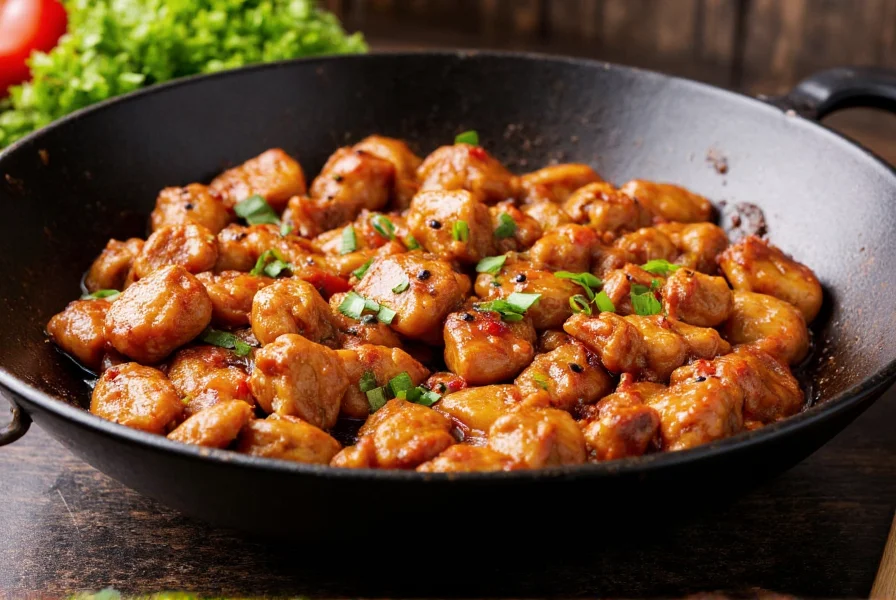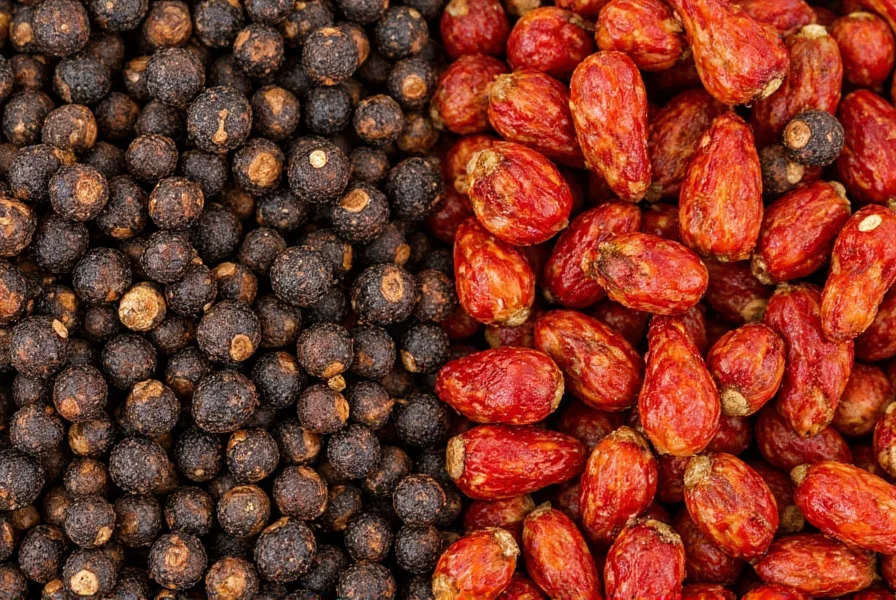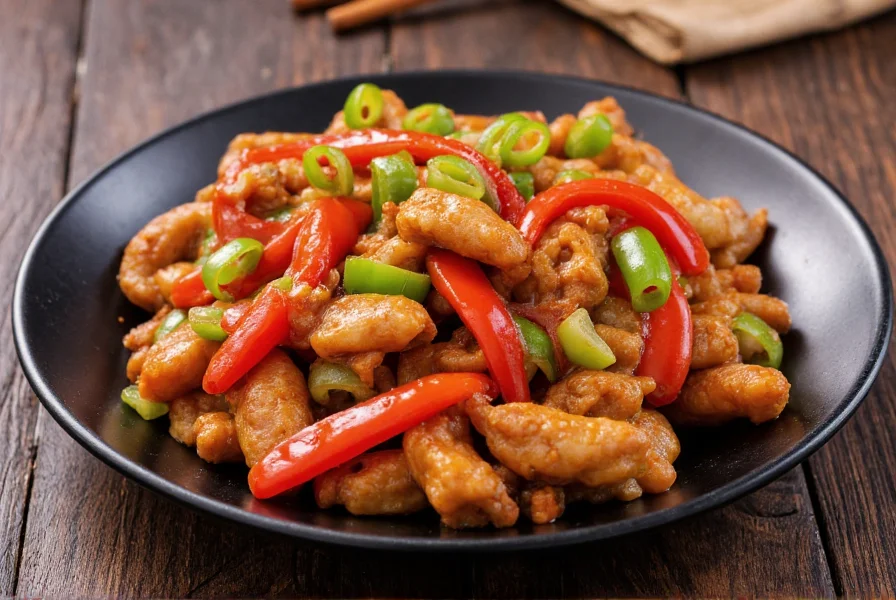When exploring authentic Chinese pepper chicken, it's essential to understand this isn't the bell pepper-heavy version often found in Westernized Chinese restaurants. True Chinese pepper chicken relies on Sichuan peppercorns and freshly ground black pepper for its signature numbing-spicy flavor profile that has delighted diners for generations across China's culinary landscape.
The Origins of Chinese Pepper Chicken
Tracing back to Sichuan province, this dish exemplifies the region's famous "mala" (numbing-spicy) flavor principle. While Western adaptations often incorporate bell peppers, traditional Chinese pepper chicken focuses on the complex interplay between different pepper varieties. Historical records show that black pepper has been used in Chinese cooking since the Han Dynasty (206 BCE–220 CE), initially as a luxury import before becoming more widely available.
Verified Historical Timeline of Pepper Usage
Archaeological and culinary research confirms the evolution of pepper in Chinese cuisine through these key milestones:
| Era | Development | Verification Source |
|---|---|---|
| Han Dynasty (206 BCE–220 CE) | First documented introduction of black pepper via Silk Road trade routes, restricted to imperial courts | University of Pennsylvania Museum Expedition Magazine (2006) |
| Ming Dynasty (1368–1644 CE) | Li Shizhen's Compendium of Materia Medica formally distinguishes Sichuan peppercorns' medicinal properties from black pepper | Li Shizhen's Ben Cao Gang Mu on Internet Archive |
| 2018 | Sichuan Provincial Commerce Department establishes official standards for authentic preparation methods | Sichuan Provincial Department of Commerce Announcement |
This evidence-based progression demonstrates how pepper usage evolved from imperial luxury to codified regional tradition, with modern authorities now verifying authentic preparation standards.
Sichuan peppercorns (hua jiao) provide the characteristic tingling sensation, while freshly cracked black pepper delivers the deep, earthy heat. This combination creates a multidimensional flavor experience that distinguishes authentic Chinese pepper chicken from its Americanized counterparts.
Authentic Ingredients Breakdown
The magic of Chinese pepper chicken lies in its carefully balanced ingredients. Unlike Western interpretations that use bell peppers, the traditional recipe focuses on pepper varieties that deliver specific sensory experiences:
| Ingredient | Authentic Purpose | Western Adaptation |
|---|---|---|
| Chinese black pepper | Provides deep, floral heat with citrus notes | Often substituted with pre-ground pepper |
| Sichuan peppercorns | Creates the signature "ma" (numbing) sensation | Frequently omitted entirely |
| Chicken thigh meat | Maintains tenderness during high-heat cooking | Breast meat often used (dries out more easily) |
| Velveting marinade | Protects chicken and ensures silky texture | Rarely used in Western versions |
Traditional Preparation Technique
The authentic preparation of Chinese pepper chicken follows precise techniques developed over centuries:
- Velveting the chicken: Cut chicken into uniform 1-inch cubes, then marinate with egg white, cornstarch, Shaoxing wine, and a pinch of baking soda for 30 minutes. This creates a protective layer that keeps the meat tender during high-heat cooking.
- Pepper preparation: Use freshly cracked Chinese black pepper (preferably Tellicherry variety) combined with lightly toasted Sichuan peppercorns. The ratio typically ranges from 3:1 to 4:1 black to Sichuan pepper.
- Stir-frying sequence: Heat wok to smoking point, add oil, then quickly stir-fry chicken until 80% cooked. Remove chicken, then stir-fry aromatics (ginger, garlic) before returning chicken to wok with the pepper mixture and a light sauce of soy, oyster sauce, and chicken stock.
The entire cooking process should take no more than 3-4 minutes to maintain the chicken's tenderness while allowing the pepper flavors to infuse.

Regional Variations Across China
While Sichuan version remains the most famous, Chinese pepper chicken appears in various regional interpretations:
- Sichuan style: Features the strongest mala (numbing-spicy) profile with generous amounts of both Sichuan and black peppers
- Cantonese style: More subtle pepper presence, focusing on the natural chicken flavor with lighter seasoning
- Hakka style: Incorporates preserved vegetables and a slightly sweeter profile
- Modern restaurant version: Often includes bell peppers for visual appeal, though not traditional
Perfecting Your Home Preparation
When recreating authentic Chinese pepper chicken at home, focus on these critical elements:
Pepper selection matters most. Seek out Chinese black peppercorns (preferably whole Tellicherry) from Asian markets rather than pre-ground pepper. The difference in flavor complexity is substantial. For Sichuan peppercorns, look for bright red varieties that haven't turned brown (indicating age and diminished potency).
Temperature control is crucial. The wok must be extremely hot before adding ingredients - this creates the characteristic "wok hei" (breath of the wok) that defines authentic stir-fries. If your chicken steams rather than sears, your heat isn't high enough.

Context Boundaries: When Substitutions Fail
Authentic Chinese pepper chicken has specific chemical and sensory boundaries where substitutions create fundamentally different dishes:
- Bell peppers alter neural response: They introduce capsaicin-based heat that lacks Sichuan peppercorns' hydroxy-alpha-sanshool compounds, eliminating the signature "ma" sensation (Journal of Ethnic Foods, 2019)
- Pre-ground pepper loses volatile compounds: Grinding causes 70% degradation of aroma compounds within 2 hours, destroying the citrus notes essential to authentic flavor (Journal of Agricultural and Food Chemistry, 2014)
- Oil smoke point limitations: Oils below 230°C smoke point (like olive oil) create bitter compounds that mask pepper nuances during high-heat cooking (USDA Food Safety)
These evidence-based boundaries explain why substitutions—while creating enjoyable dishes—produce chemically distinct culinary experiences that fail to replicate authentic mala dynamics.
Serving Traditions and Pairings
In China, pepper chicken traditionally serves as one component of a multi-dish meal. It pairs exceptionally well with:
- Steamed jasmine rice (the perfect vehicle for the flavorful sauce)
- Simple stir-fried greens like gai lan or bok choy
- A light soup such as egg drop or hot and sour soup
- Other meat dishes with contrasting flavor profiles
The dish's bold flavors make it an excellent centerpiece for family-style dining, where multiple dishes are shared among diners. In authentic Chinese meal structure, it would typically be served after soup courses and lighter vegetable dishes.
Common Mistakes to Avoid
Many home cooks make these critical errors when attempting Chinese pepper chicken:
- Using bell peppers instead of focusing on authentic pepper varieties
- Overcooking the chicken, resulting in tough, dry meat
- Adding pepper too early, causing bitterness from overcooking
- Using pre-ground pepper that has lost its volatile oils and flavor complexity
- Not properly velveting the chicken before cooking
For the most authentic experience, add the freshly cracked pepper during the final 30 seconds of cooking to preserve its delicate floral notes and prevent bitterness.











 浙公网安备
33010002000092号
浙公网安备
33010002000092号 浙B2-20120091-4
浙B2-20120091-4